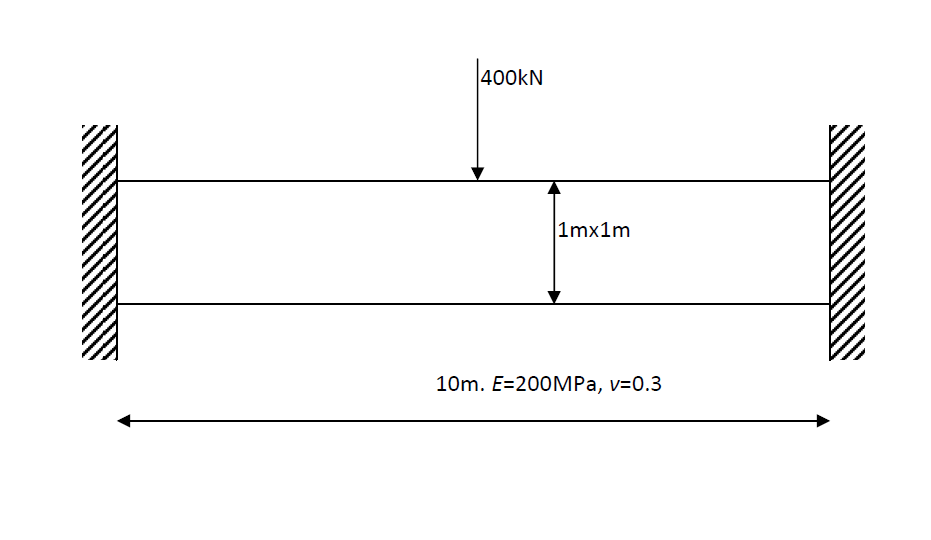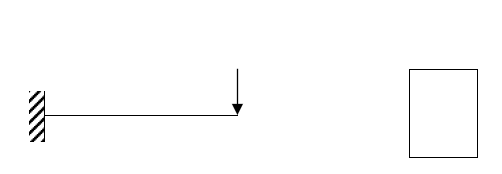Finite Element Analysis: Video and Tutorials
Problem 1: Deep Beam
Problem 2: Bernoulli vs. Timoshenko Cantilever Beams
Problem 3: Inflating a Balloon of Shell Elements
Problem 4: Elasto-Plastic Buckling of a Plate
Problem 5: Cylinder in Contact with a Rigid Plate
Problem 6: Elasto-Plastic Buckling of a 100x100x10 Steel Angle Under Bending and Normal Force
Example: How to Extract Data Along a Path in ABAQUS
Complete Linear Analysis – Theory and FEA Comparison
Linear Analysis in Mathematica:
Linear Analysis in ABAQUS:
Problem 1: Deep Beam
In this problem, we look at the analysis of a deep beam with a concentrated load in the middle. This problem serves as an introduction to for input and output of a PLANE solid linear elastic model into ABAQUS.

Problem description:
Mesh, Material, and Section:
Assembly:
Viewing Results:
Importing into Excel:
Problem 2: Bernoulli Vs. Timoshenko Cantilever Beams
The dimensions of the beam are ![]() . The Material properties are:
. The Material properties are: ![]() ,
, ![]() . The concentrated load at the cantilever end is
. The concentrated load at the cantilever end is ![]() . The effective shear area for the Timoshenko beam is
. The effective shear area for the Timoshenko beam is ![]() . Note that in some texts, the inverse of this relationship is given
. Note that in some texts, the inverse of this relationship is given ![]() . The exact solution for the vertical displacement at the cantilever end for the Bernoulli beam is given by:
. The exact solution for the vertical displacement at the cantilever end for the Bernoulli beam is given by:
![]()
While that for the Timoshenko beam is given by:
![]()

Problem description:
Part 2:
Part 3:
Part 4:
Part 5:
Problem 3: Inflating a Balloon of Shell Elements
In this example we look at using hyperelastic material and shell elements for a highly nonlinear problem.
Part 1:
Part 2:
Part 3:
Part 4:
Part 5:
Problem 4: Elasto-Plastic Buckling of a Plate
A plate that is thick and
wide is loaded until it buckles around the minor axis. The problem will be considered as a plane problem. The Euler buckling load can be calculated as follows:
![]()
![]()
The critical load per width of the plate is given by:
![]()
The relationship between the true stress and the plastic strain is given by:
| True Stress(MPa) | Plastic Strain |
|---|---|
| 800 | 0 |
| 900 | 0.1% |
| 1000 | 0.3% |
| 1100 | 0.7% |
| 1200 | 2% |
Part 1:
Part 2:
Part 3:
Part 4:
Part 5:
Part 6:
Part 7:
Problem 5: Cylinder in Contact with a Rigid Plate
In this example, an arbitrary cylinder is resting on a rigid base. The friction coefficient is taken as 0.2.

Part 1:
Part 2:
Part 3:
Part 4:
Problem 6: Elasto-Plastic Buckling of a 100X100X10 Steel Angle Under Bending and Normal Force
In this example, the Arc-Length method (Riks method in ABAQUS) is used to apply bending and normal force on a steel angle. The following are three videos created by three different students:
Example: How to Extract Data Along a Path in Abaqus
See the following two examples created by two former students on how to extract data along a path in ABAQUS:
